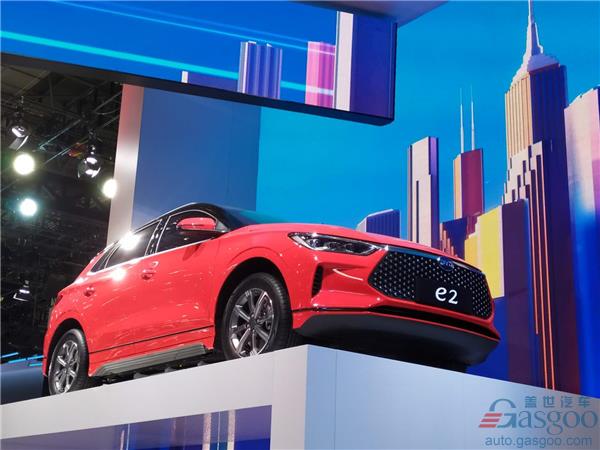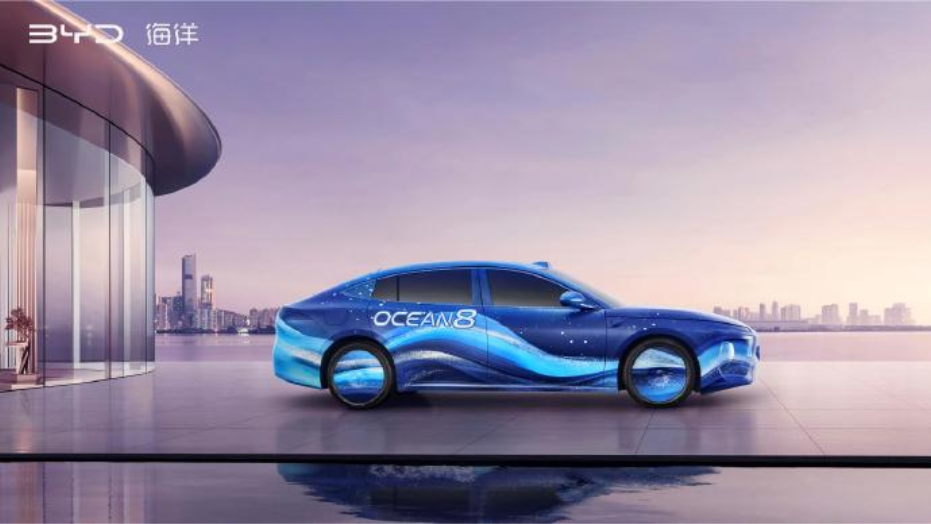Shanghai (Gasgoo)- Chinese policy makers have specified that the credit ratios of new energy vehicles (NEVs) are respectively required to be 14%, 16% and 18% for the year of 2021, 2022 and 2023, rising from 10% and 12% formerly requested for 2019 and 2020.

It is a part of contents contained in the Amendments to the Measures for the Parallel Administration of the Average Fuel Consumption and New Energy Vehicle Credits of Passenger Vehicle Enterprises (hereinafter referred to as the “Amendments”, or the “Amendments to the Measures or Dual Credit Policy) issued in mid-June by the MIIT, the Ministry of Finance, the Ministry of Commerce, the General Administration of Customs and the State Administration for Market Regulation.
Based on the ratios set for 2021-2023 period, China can basically ensure that the average fuel consumption of new passenger vehicles (PVs) will reach 4 liters per 100 kilometers by 2025, and NEVs will account for 20% of total automobile outputs or sales then, an MIIT’s official replied to local media outlets. Besides, the supply of positive and negative credits for 2021-2023 is expected to slightly exceed the demand, and the prices of credits objectively reflect the market value.
Apart from the assessment standard to NEV credit ratios, the Amendments also involve the calculation methods for new energy PV models and the preferential measures for the accounting of small-scale companies' fuel consumption credits.
The parallel management method of Corporate Average Fuel Consumption (CAFC) and New Energy Vehicle (NEV) Credits for China's Passenger Car market – known as the aforementioned dual-credit policy – was formally implemented in 2018.
In 2019, China sold 1.06 million new energy PVs, for the fifth year in a row honored the champion in the world. The actual average fuel consumption stood at 5.5 liters per 100km, declining over 10% compared to 2016. Authorities started amending the Measures or Dual Credit Policy for NEVs because they found out that the technical standards still need to be upgraded, companies investment in energy-saving technologies of fuel-burning technologies was still insufficient, and the imbalance existed between the supply and demand of credits.
According to the Amendments, for domestic PV manufacturers whose outputs in an accounting year are not more than 2,000 units and which maintain independent production, research and development and business operation, and imported passenger vehicle suppliers that import vehicles not more than 2,000 units and are authorized by overseas passenger vehicle manufacturers, the up-to-standard requirements for their average fuel consumption credits shall be relaxed according to the following provisions:
Where their average fuel consumption from 2021 to 2023 falls by not less than 4% from the previous year, their up-to-standard average fuel consumption shall be relaxed by 60% on the basis of the average fuel consumption as set forth in the Evaluation Methods and Indicators for the Fuel Consumption of Passenger Vehicles; if the average fuel consumption falls by not less than 2% nor more than 4%, their up-to-standard value shall be relaxed by 30%.
The up-to-standard average fuel consumption of a PV enterprise shall be calculated by multiplying the enterprise's target average fuel consumption by the requirement for the average fuel consumption in this accounting year (the calculation result shall be rounded off to the second decimal).
The accounting requirements for the year of and after 2024 shall be separately announced by the MIIT.
The up-to-standard NEV credits of a PV enterprise are calculated by multiplying the output or import volume of the traditional energy passenger vehicles in the accounting year by the credit ratio required for new energy vehicles (the calculation result shall be rounded off to an integer).
The Amendments stipulates that from 2021 to 2023, the outputs or imports of low-fuel-consumption (LFC) PVs are counted as 50%, 30% and 20% of their actual volumes when calculating the up-to-standard NEV credits. Based on the calculation method of NEV credits, the lower the up-to-standard number is, the higher the positive credits will be produced.
The MIIT official noted that the strengthening preference in calculating NEV credits is launched to encourage companies to make greater investments in R&D of energy-saving technologies, and is in view of the increasingly stricter requirements on up-to-standard fuel consumption, and more technical difficulties and costs in building qualifying LFC models.
The Amendments also expands the scope of the traditional energy PVs available for the credit calculation by drawing the alcohol ether-fueled PVs. The original Measures defined the traditional energy PVs as the PVs (including non-plug-in hybrid passenger vehicles) that are fueled with gasoline, diesel or gas fuel, except new energy passenger vehicles.









